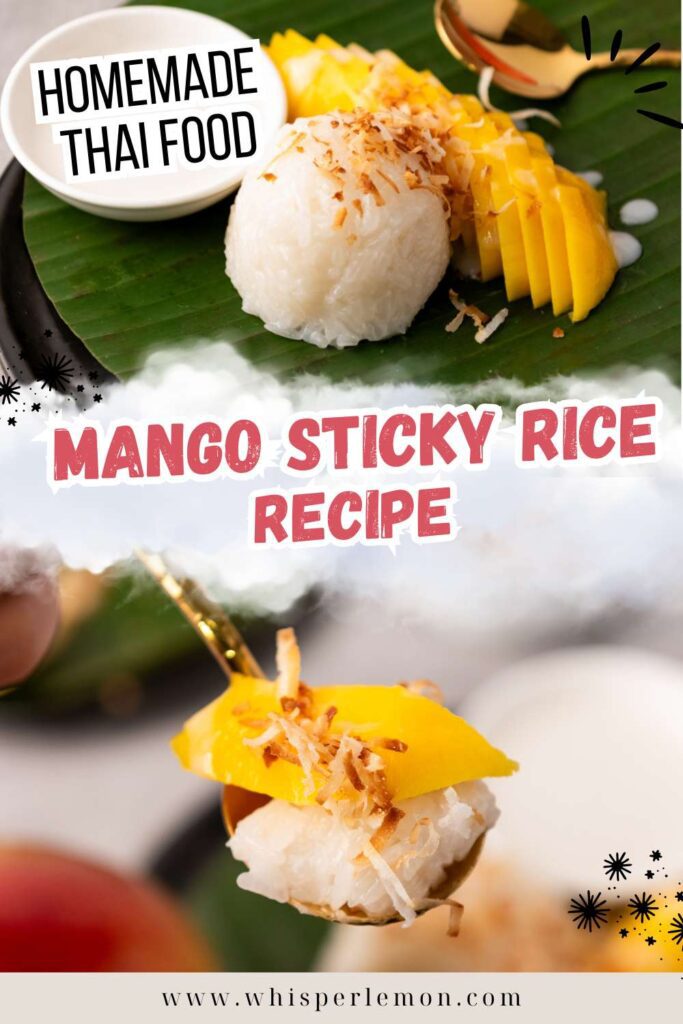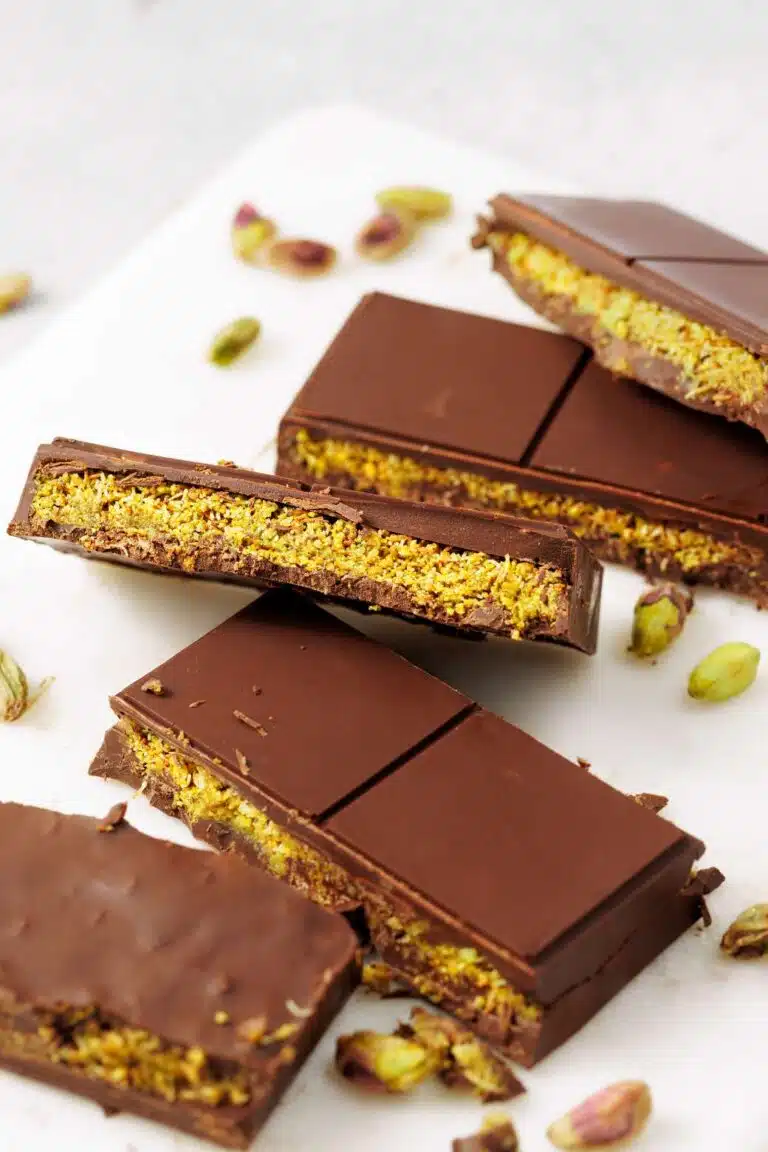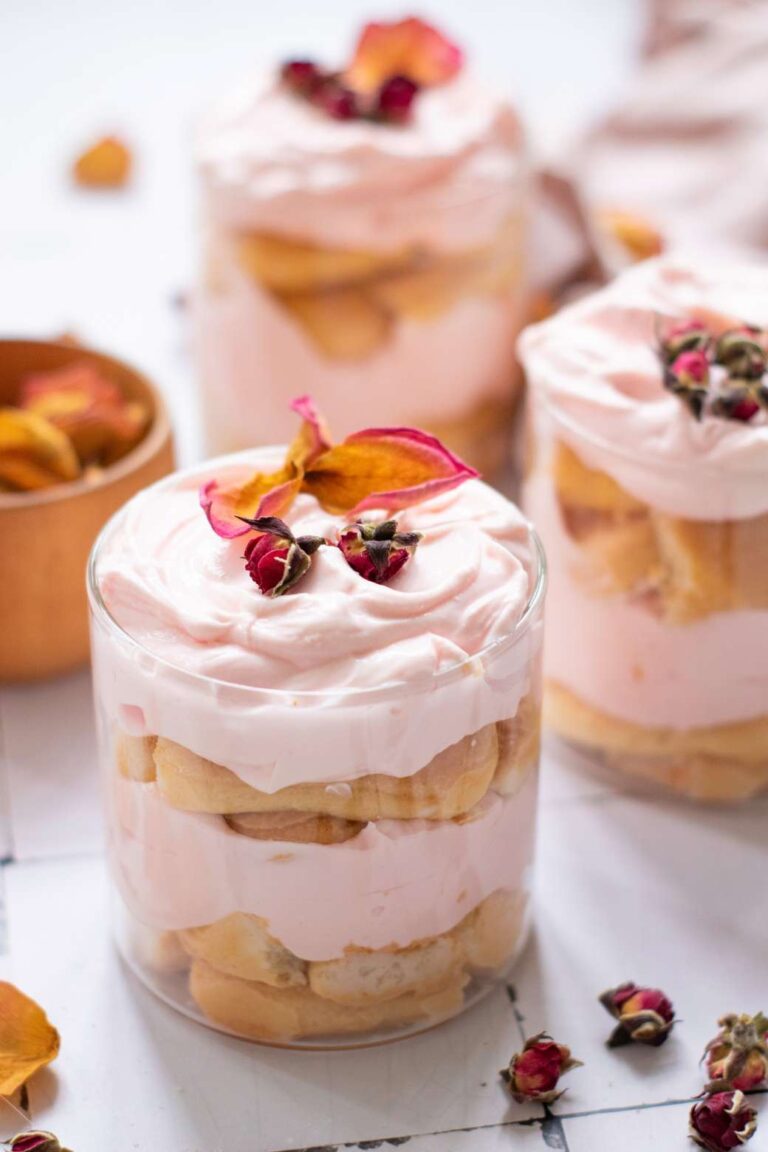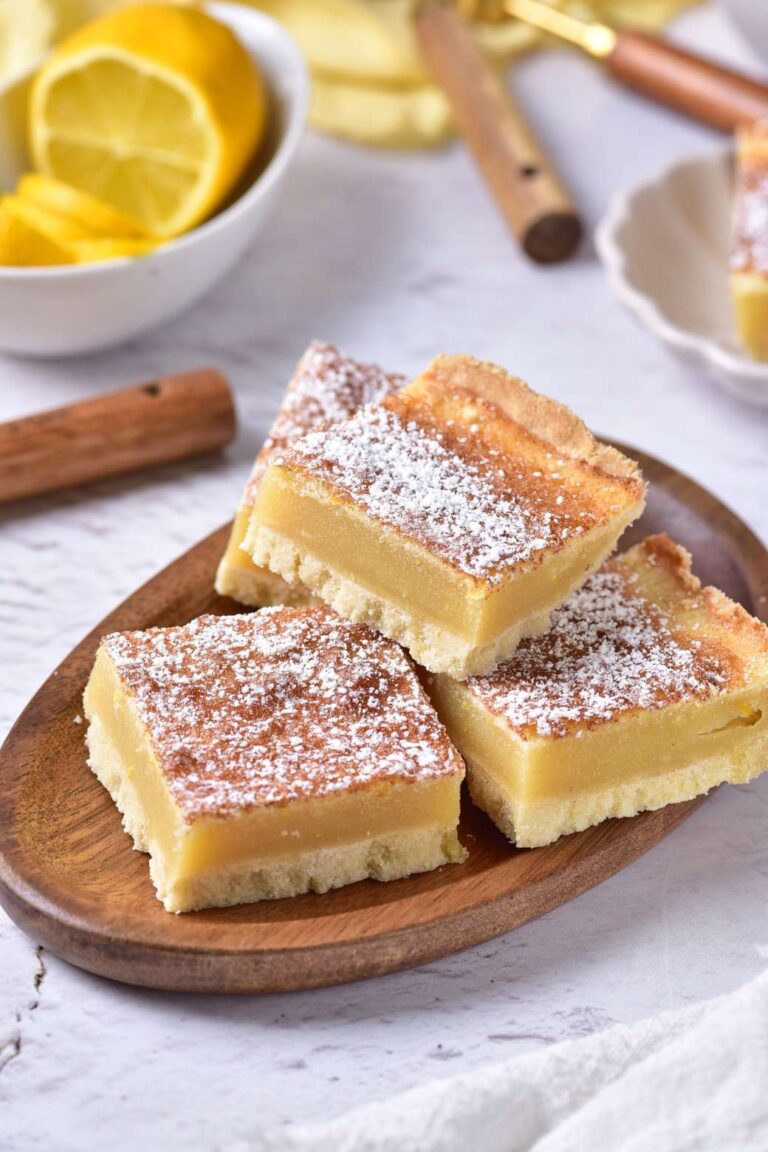The Best Thai Mango Sticky Rice
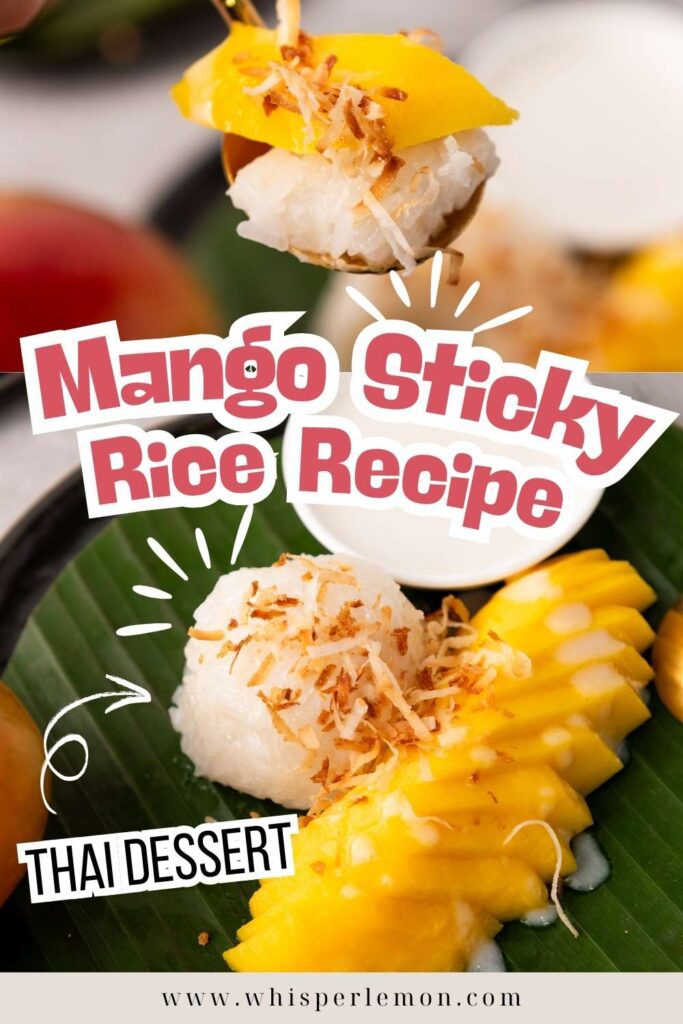
This Mango Sticky Rice Recipe offers a taste of authentic Thailand right at home. Made with Thai sweet sticky rice coconut milk, fresh mango, and a touch of sweetness, it’s the perfect dessert for a hot summer day!
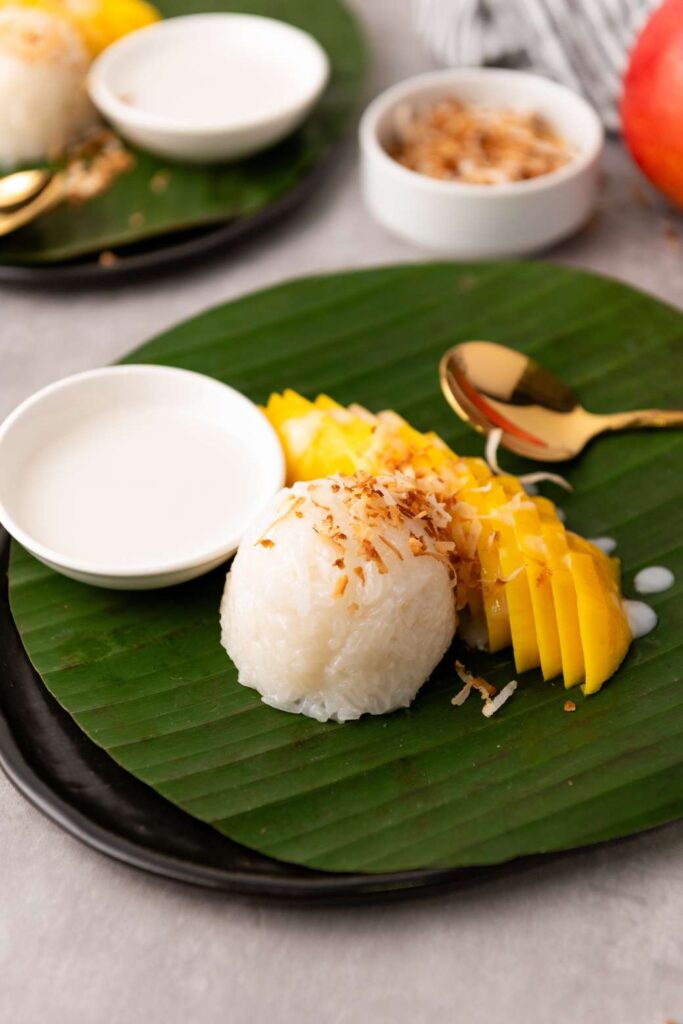
A favorite among Asian desserts, this combination of sticky rice and mango creates a simple yet flavorful treat. Whether you’re looking for coconut rice with mango or making homemade Thai food, this recipe is a must-try for anyone who loves fruity, fresh flavors.

Reasons why you’ll love this recipe♡
- The creamy Thai sweet sticky rice coconut milk combined with the natural sweetness of fresh mango creates the perfect balance of flavors.
- It’s a simple and quick Asian dessert that’s easy to make, yet delivers authentic homemade Thai food taste.
- The combination of sticky rice and mango is both comforting and refreshing, making it a favorite treat for a hot summer day.
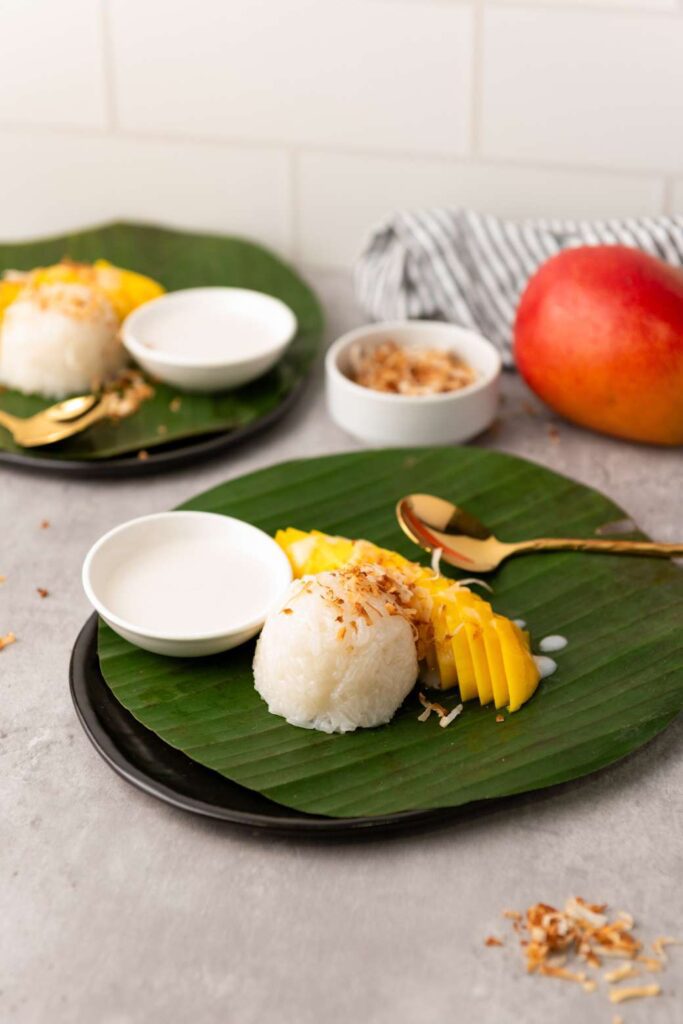
Ingredients you’ll need for this recipe
Servings: 4
Sticky Rice
Coconut Sticky Rice Mixture
Coconut Sauce
For Serving
Equipment
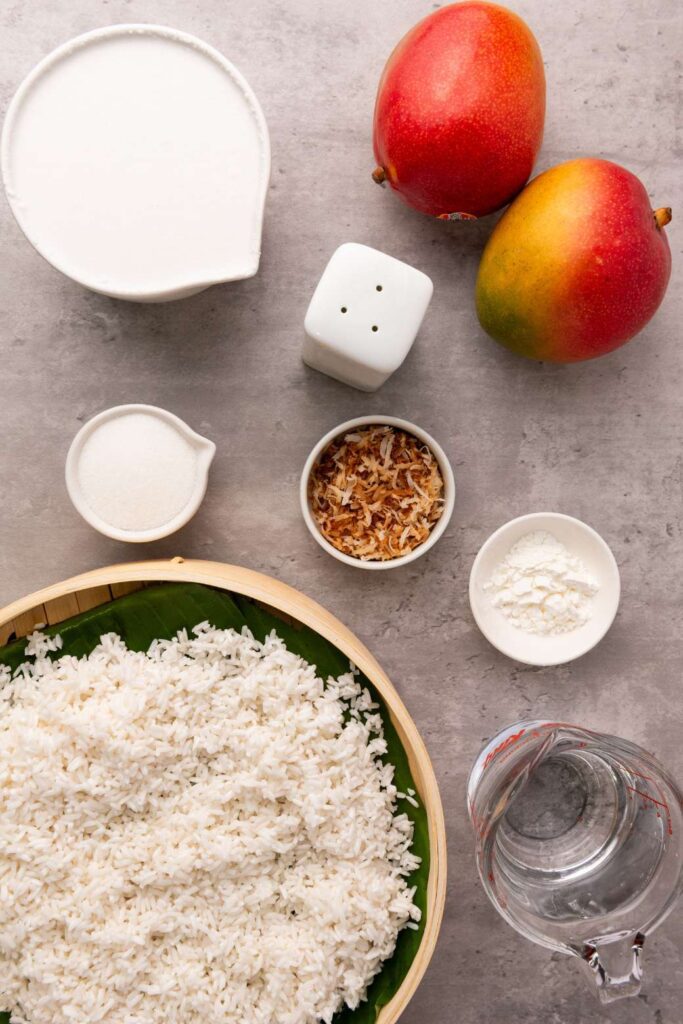
Step by Step Guide
Sticky Rice
Wash the glutinous rice multiple times in cold water until the water is clear. This helps remove excess starch and ensures even cooking.
Let the rice soak in cold water for at least 4 hours or overnight. This is a crucial step to achieve the ideal texture.
Fully drain the soaked rice before steaming to remove excess water.
Add about 2 inches of water to a large pot or wok. Make sure the water stays below the steaming basket to keep the rice from getting submerged.
Warm the water over medium heat until it begins to gently simmer.
Place cheesecloth or banana leaves in the steaming basket to keep the rice from sticking.
Evenly spread the drained sticky rice inside the steamer without pressing it down. Proper airflow is essential for even cooking.
Cover the basket with a lid or a clean kitchen towel to lock in the steam.
Steam for 25-30 minutes, flipping the rice halfway through the cooking time: After 15 minutes, carefully flip or stir the rice with a spatula to promote even cooking. Keep steaming for an additional 10-15 minutes until the rice becomes tender, translucent, and sticky.
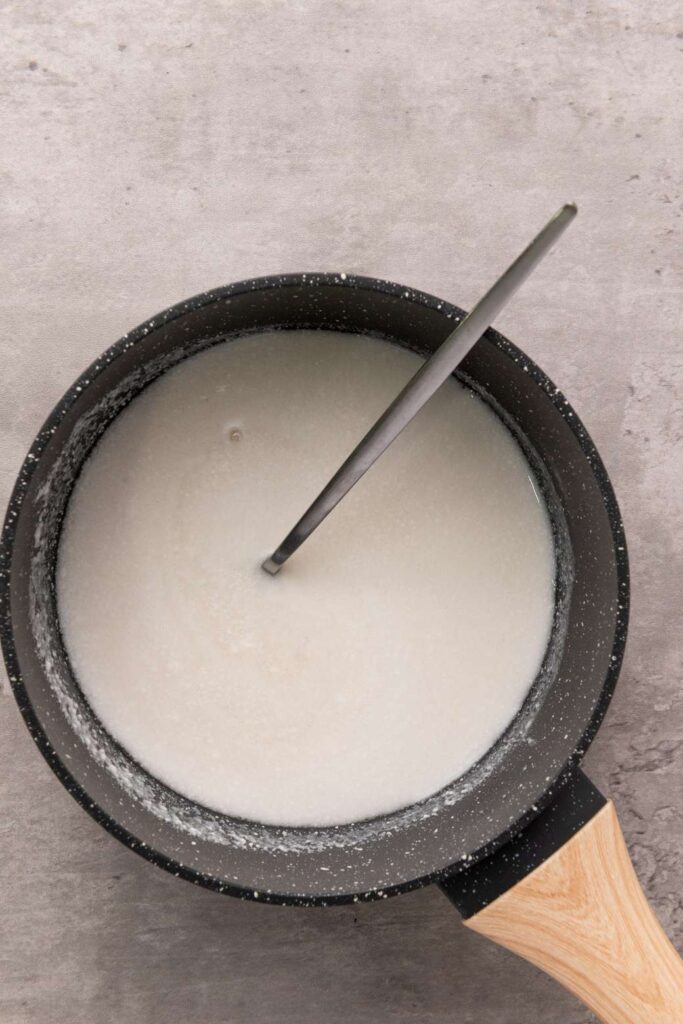
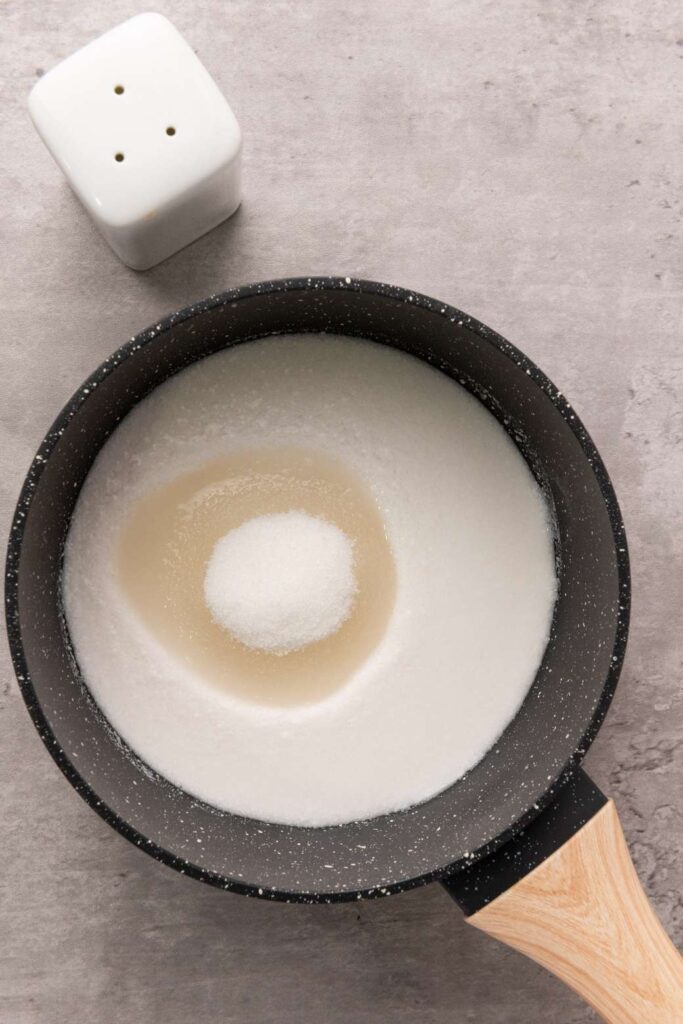
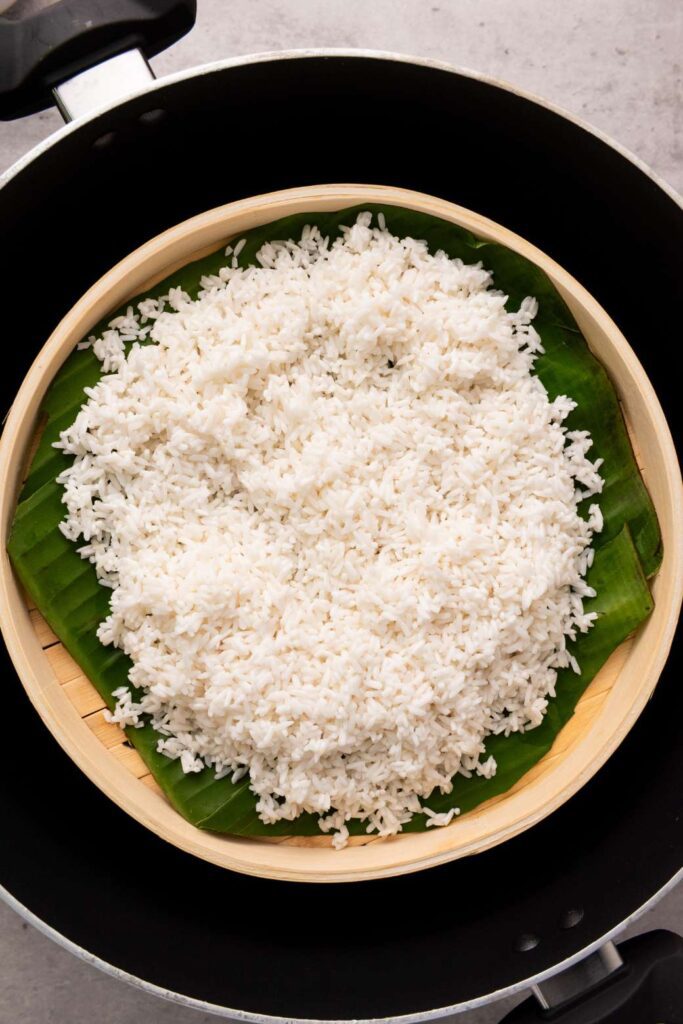
Coconut Sticky Rice Mixture
While the rice is steaming, warm 1 1/4 cups of coconut milk, 1/3 cup of sugar, and 1/2 teaspoon of salt in a saucepan over low heat.
WANT TO SAVE THIS FOR LATER?
Stir the mixture until the sugar dissolves, making sure it doesn’t come to a boil—just warm it gently.
After the sticky rice is cooked, transfer it to a bowl.
Slowly pour the warm coconut mixture over the rice, gently folding it in. Cover the bowl and let it rest for 15-20 minutes to allow the flavors to absorb.
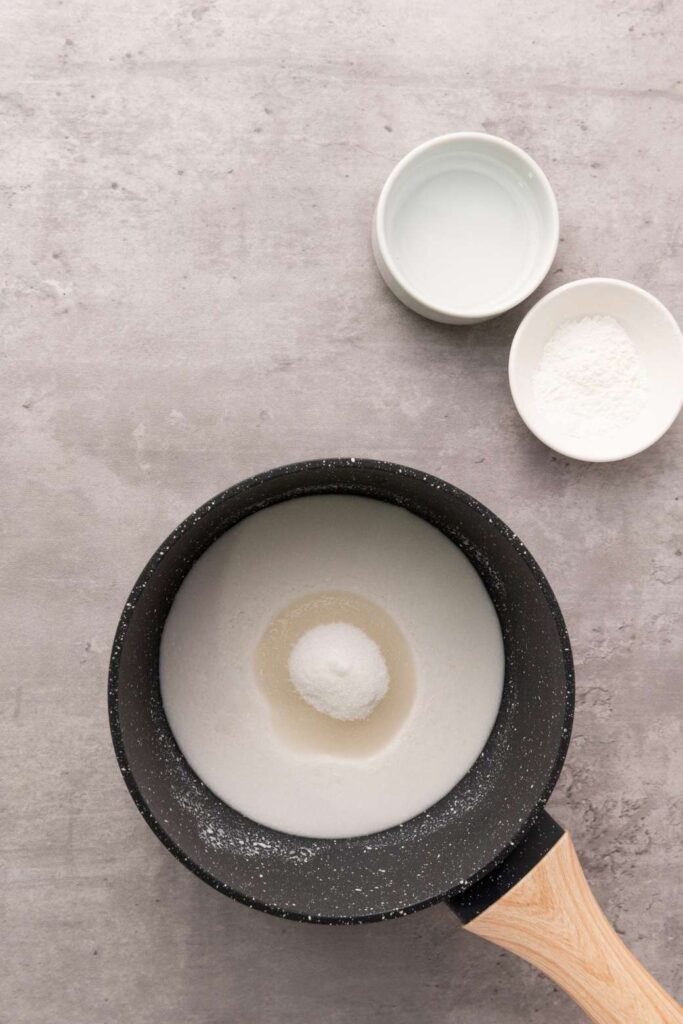
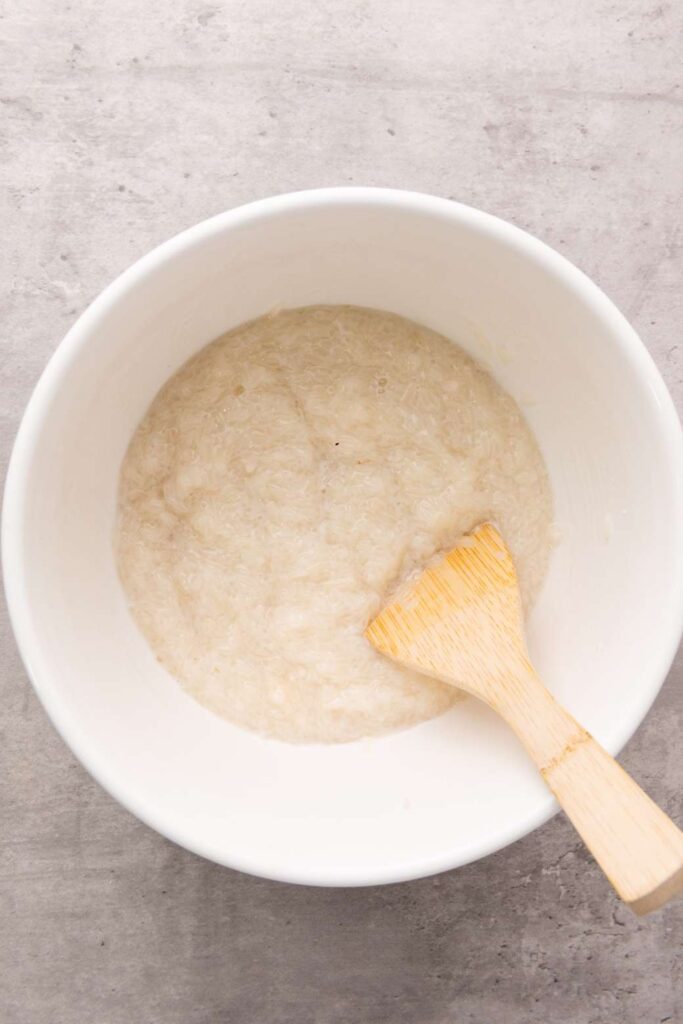
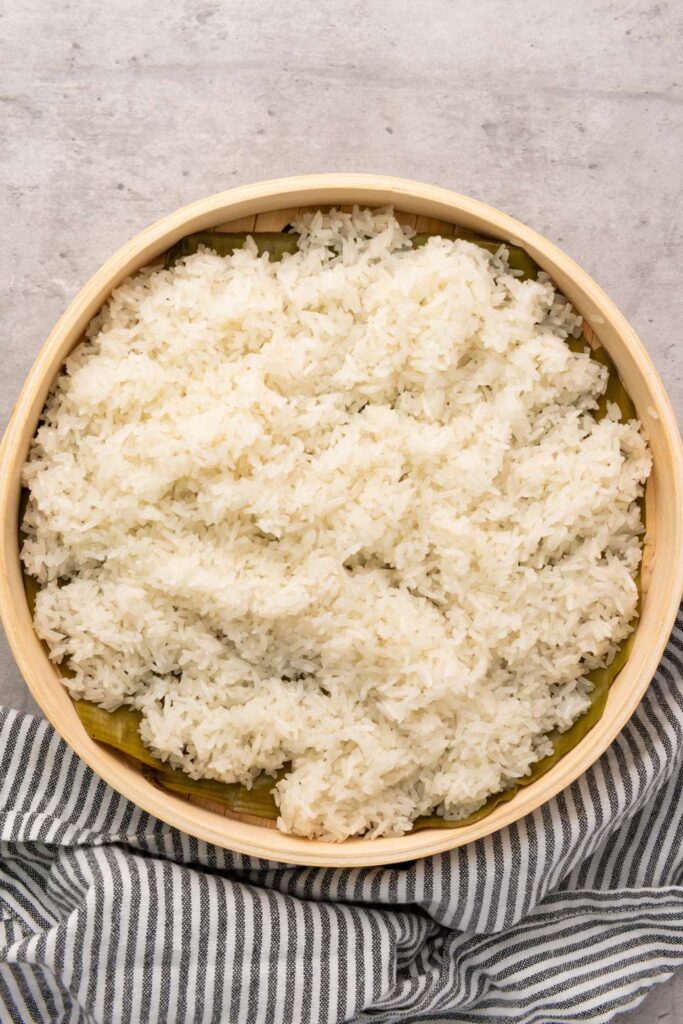
Coconut Sauce
In a small saucepan, warm 1/2 cup of coconut milk, 2 tablespoons of sugar, and 1/4 teaspoon of salt over low heat.
For a thicker sauce, dissolve 1 teaspoon of cornstarch in 1 tablespoon of water, then stir it into the mixture. Let it simmer for 1-2 minutes until it slightly thickens.
Spoon a serving of sticky rice onto a plate.
Place fresh mango slices next to the sticky rice on the plate.
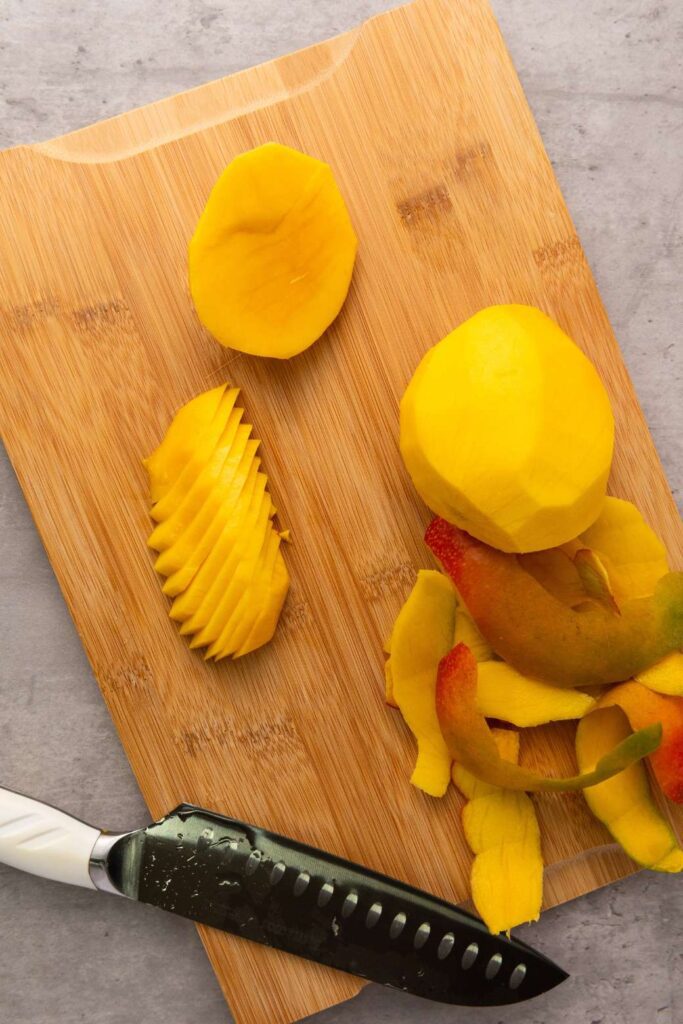

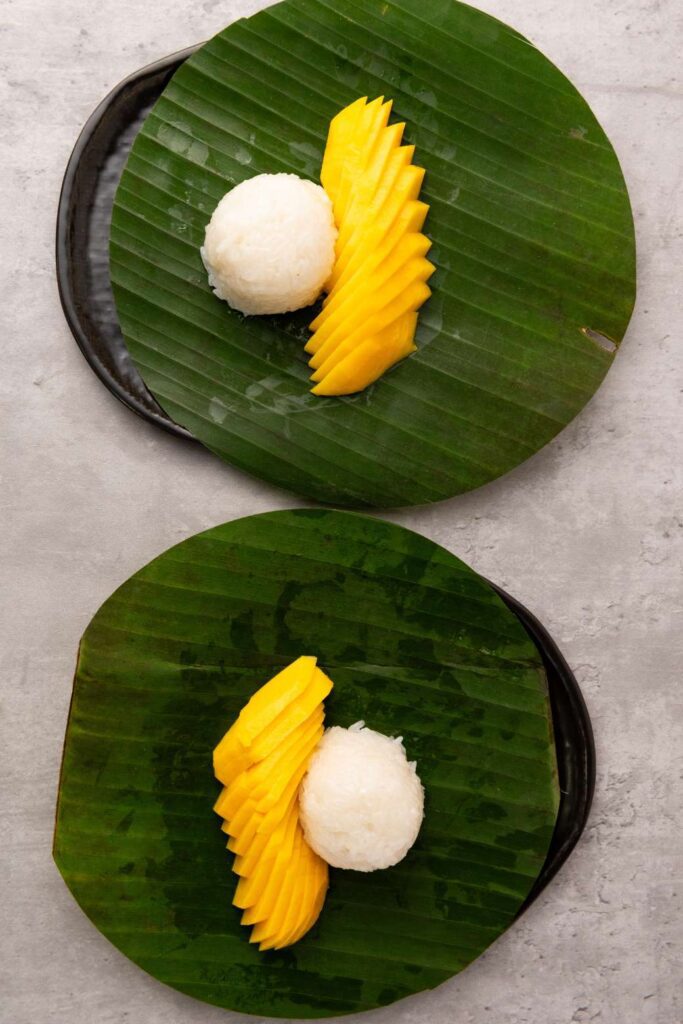
Drizzle the coconut sauce over the rice and garnish with toasted sesame seeds, crushed peanuts, or toasted coconut flakes, if preferred.


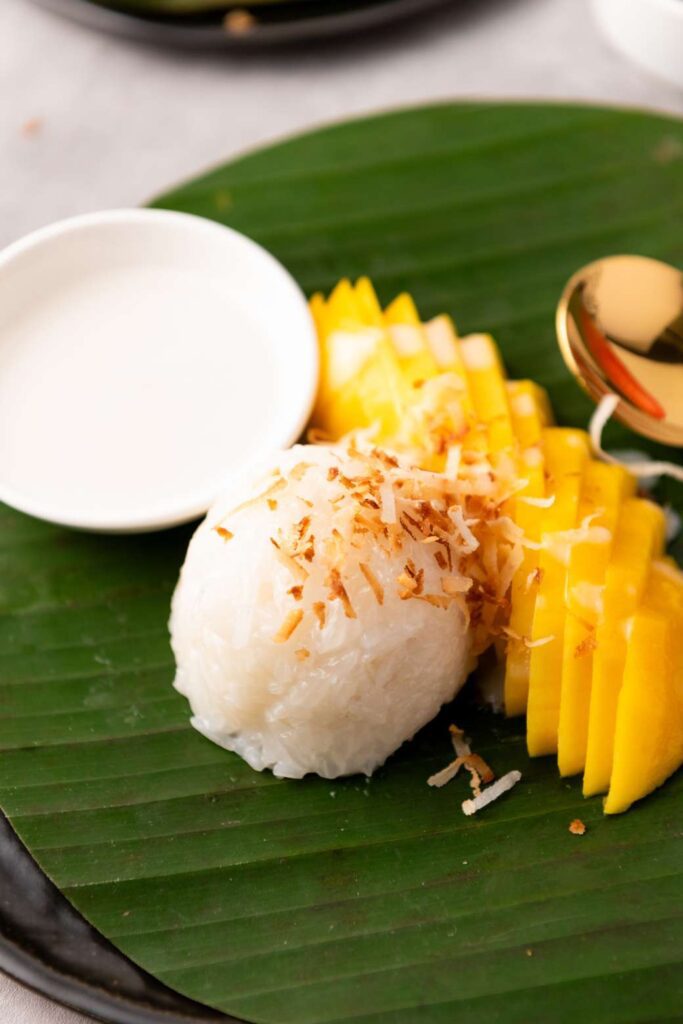
Recipe FAQ
Q: What type of rice is best for this recipe?
A: Use Thai glutinous rice for the best chewy texture. Other types of rice won’t yield the same result.
Q: Can I use canned coconut milk for this recipe?
A: Yes, canned coconut milk works perfectly for making the coconut sauce in this recipe.
Q: Can I use regular rice instead of glutinous rice?
A: It’s best to use glutinous rice, as it gives the proper texture and stickiness for this dish.
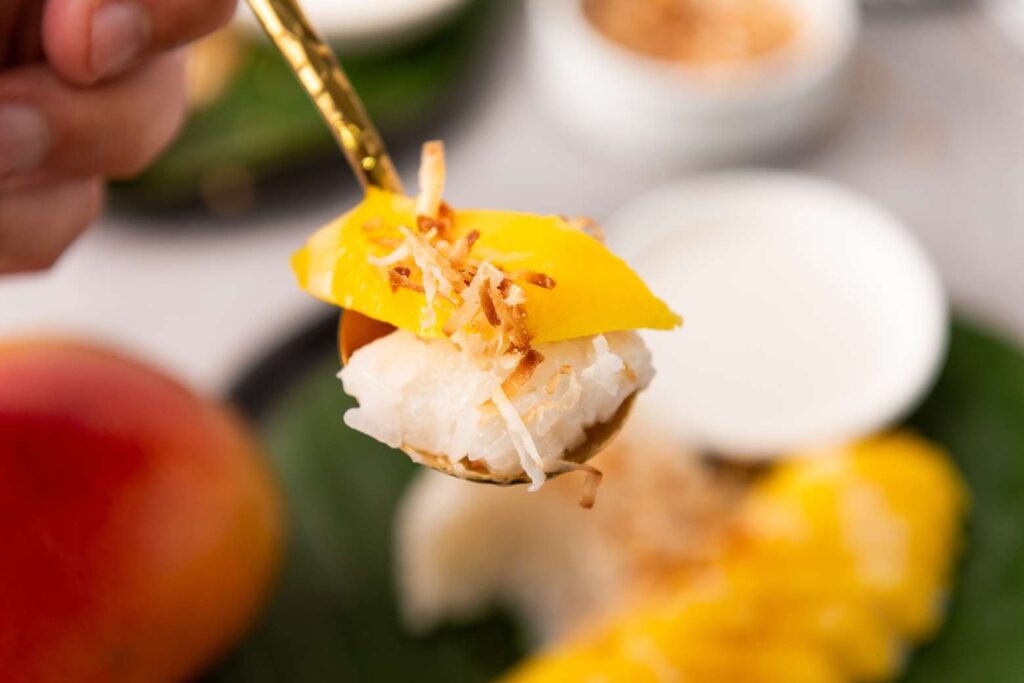
Q: Do I have to soak the rice?
A: Yes, soaking the rice is important as it helps the rice cook evenly and achieve the right texture.
Q: How long should I soak the rice?
A: Soak the rice for at least 4 hours or overnight for the best results.
Q: Can I make this recipe ahead of time?
A: Yes, you can prepare the sticky rice and coconut sauce in advance. Just refrigerate and reheat before serving.

Q: How do I know when the rice is fully cooked?
A: The rice should be tender, sticky, and translucent. It will have absorbed all the coconut sauce.
Q: Can I use frozen mangoes?
A: Fresh mangoes are best for flavor and texture, but if fresh ones are unavailable, you can use frozen mangoes.
Q: What can I use as a topping for this dessert?
A: You can garnish the mango sticky rice with toasted sesame seeds, crushed peanuts, or toasted coconut flakes for added texture.
Q: Can I add more sugar to the coconut sauce?
A: Yes, you can adjust the sweetness of the coconut sauce by adding more sugar to your taste.
Q: How should I store leftover mango sticky rice?
A: Store leftovers in an airtight container in the refrigerator for up to 2 days.
Q: Can I serve this dish warm?
A: Yes, mango sticky rice can be served warm or at room temperature. It’s delicious either way.
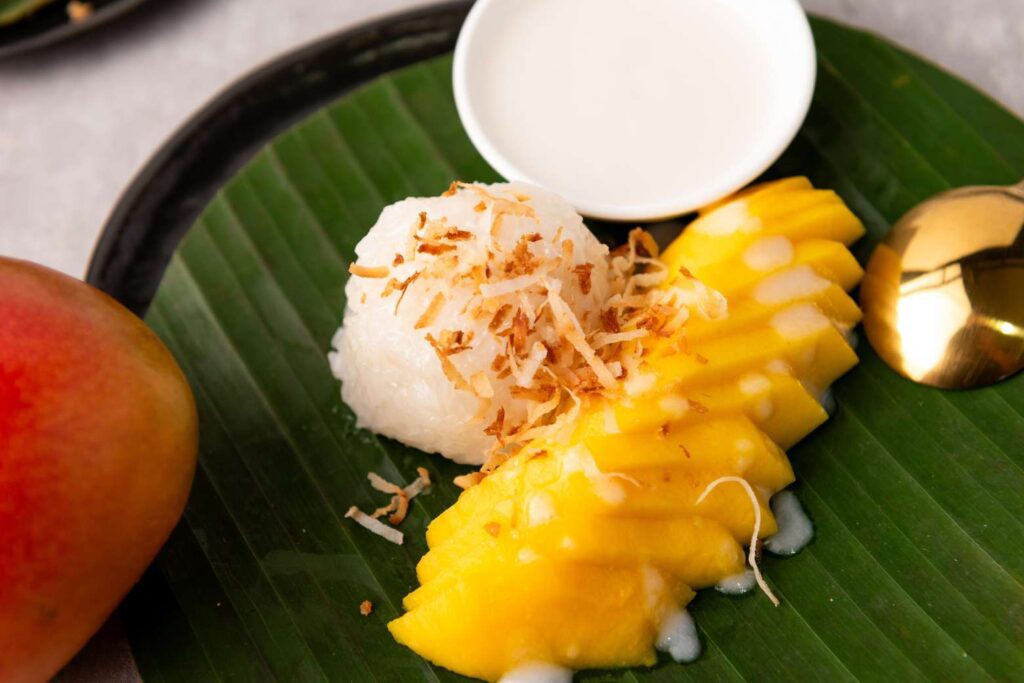
Q: What kind of mango should I use?
A: Use ripe, sweet varieties like Ataulfo or Nam Dok Mai for the best flavor.
Q: Is this recipe gluten-free?
A: Yes, this recipe is naturally gluten-free as it uses glutinous rice and coconut milk.
Q: Can I add other fruits to the dish?
A: While mango is traditional, you can experiment with other tropical fruits like papaya or lychee for a unique twist.
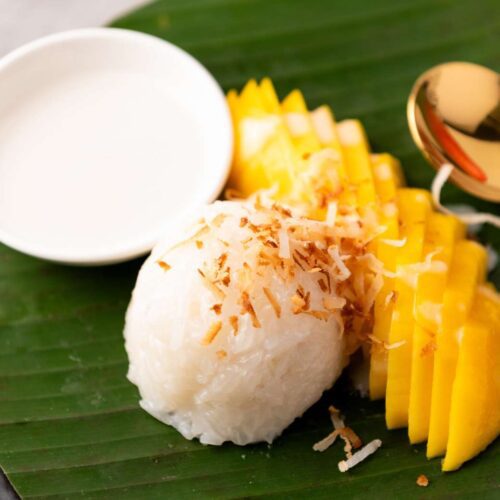
Mango Sticky Rice
Equipment
- large pot or wok
- steaming basket
- cheesecloth or banana leaves
- clean kitchen towel
- spatula
Ingredients
Sticky Rice
- 1 cup Thai glutinous rice (also called sticky rice)
- water, for soaking and steaming
Coconut Sticky Rice Mixture
- 1 1/4 cup coconut milk, full-fat
- 1/3 cup sugar
- 1/2 tsp salt
Coconut Sauce
- 1/2 cup coconut milk
- 1/4 tsp salt
- 2 tbsp sugar
- 1 tsp cornstarch (optional, for thickening)
For Serving
- 2 ripe mangoes, peeled and sliced
- 1 tbsp toasted coconut flakes (optional)
- 1 tbsp roasted sesame seeds or crushed peanuts (optional)
Instructions
Sticky Rice
- Wash the glutinous rice multiple times in cold water until the water is clear. This helps remove excess starch and ensures even cooking.
- Let the rice soak in cold water for at least 4 hours or overnight. This is a crucial step to achieve the ideal texture.
- Fully drain the soaked rice before steaming to remove excess water.
- Add about 2 inches of water to a large pot or wok. Make sure the water stays below the steaming basket to keep the rice from getting submerged.
- Warm the water over medium heat until it begins to gently simmer.
- Place cheesecloth or banana leaves in the steaming basket to keep the rice from sticking.
- Evenly spread the drained sticky rice inside the steamer without pressing it down. Proper airflow is essential for even cooking.
- Cover the basket with a lid or a clean kitchen towel to lock in the steam.
- Steam for 25-30 minutes, flipping the rice halfway through the cooking time: After 15 minutes, carefully flip or stir the rice with a spatula to promote even cooking. Keep steaming for an additional 10-15 minutes until the rice becomes tender, translucent, and sticky.
Coconut Sticky Rice Mixture
- While the rice is steaming, warm 1 1/4 cups of coconut milk, 1/3 cup of sugar, and 1/2 teaspoon of salt in a saucepan over low heat.
- Stir the mixture until the sugar dissolves, making sure it doesn't come to a boil—just warm it gently.
- After the sticky rice is cooked, transfer it to a bowl.
- Slowly pour the warm coconut mixture over the rice, gently folding it in. Cover the bowl and let it rest for 15-20 minutes to allow the flavors to absorb.
Coconut Sauce
- In a small saucepan, warm 1/2 cup of coconut milk, 2 tablespoons of sugar, and 1/4 teaspoon of salt over low heat.
- For a thicker sauce, dissolve 1 teaspoon of cornstarch in 1 tablespoon of water, then stir it into the mixture. Let it simmer for 1-2 minutes until it slightly thickens.
- Spoon a serving of sticky rice onto a plate.
- Place fresh mango slices next to the sticky rice on the plate.
- Drizzle the coconut sauce over the rice and garnish with toasted sesame seeds, crushed peanuts, or toasted coconut flakes, if preferred.
Notes
- Opt for Thai glutinous rice, as other rice varieties won’t provide the same chewy texture.
- Make sure to soak the rice, don’t skip this step – this step ensures it cooks evenly.
- Select ripe, sweet mango varieties such as Ataulfo or Nam Dok Mai for the most flavorful result.
- Steaming yields the best results—it’s best to avoid boiling sticky rice in water.
WANT TO SAVE THIS FOR LATER?
